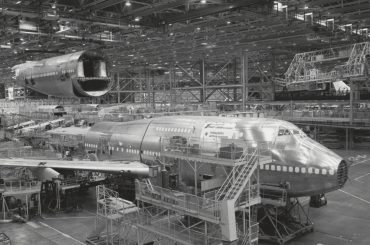
Qantas executives are quick to point out the main influences on the airline’s international business are mainly external ones – competing subsidised foreign airlines, rising fuel costs or delays in the delivery of new aircraft.
But these and many other risks are often beyond an airline’s control. Conversely, influences on the business such as quality of cabin products, service standards, staff culture, fleet selection, routes and schedules are fully within an airline’s control. But it is here, in these core areas, where Qantas really appears to have dropped the ball.
Much already has been made of Qantas’s failure to adequately replace its 747-300 ‘classic’ and the early 747-400 fleet with a more efficient type such as the 777-300ER, so, as much as I love flying on the ‘Triple’, I would not presume to add to that debate with my comparatively uninformed opinion.
However, it is obvious that 15 A380s, regardless of their greater capacity, cannot effectively replace 30 or more 747s without the fleet shrinking and routes and frequencies diminishing. Witness Qantas’s withdrawal from the Bangkok-London route, and reduction of services to the UK, China and Japan in recent years.
I flew on an old Qantas 747-400 recently, flying QF5 from Sydney to Singapore for the airshow. My wife and I booked economy exit row seats for the reasonable fare of about $1000 return each.

The aircraft, VH-OJC, was Qantas’s third 747-400. Delivered in 1989, it looked and felt every one of its 23 years and then some. The interior linings creaked and protested as we pressurised on climb out while the air-conditioning roared and hissed loudly.
The galley openings and carts nearby crashed and banged, the carpet around the galley and toilets was worn, the curtains between sections were torn and worn, the overhead bins were tiny, my seat was hard and crooked and wouldn’t spring back upright without assistance, the IFE/AVOD screen was small and was old and had few options, and the bathrooms were tight and dark and dirty. The saving grace was the crew in our section who were, quite simply, superb.
Our return flight five days later was on an A380 on QF32. The aircraft, VH-OQC, just over three years old, still had that ‘new car smell’ about it and was incredibly quiet and smooth compared to the 744. The seats were straight – although still too narrow for my large frame, the IFE/AVOD screen was twice the size of the 744 and the program choice was excellent and the overhead bins were huge and easier to reach. The negatives were the freezing air-conditioning, some of the flimsier plastic panels in the toilet were held on with duct tape and there were far too few toilets, and water was leaking from the refrigerated carts in the galley next to our seats on climb out. Who knows where that’ll end up?

But the biggest disappointment was the A380’s cabin crew who, compared to the 744’s crew, were young and appeared mostly uninterested, despite continual efforts by the excellent CSM to perk them up. One of them told me he had been “poached” from domestic on a two-year contract and that this was only his second flight on the 380 but he already looked somewhat jaded.
I used to be loyal to Qantas – for its safety record, for the fact it is Australian and for the points I had steadily accumulated. But this time, I flew with the airline only because I was cashing in points for a business class seat for my father, who also came to the airshow. Otherwise, I would almost certainly have flown with Singapore Airlines.
The inconsistency of product and service on my two flights was profound. Such consistency across its fleet must surely be the most basic and yet highest priority for this once great airline, especially when faced with rapidly improving or pace-setting competitors such as Virgin Australia, Emirates, Etihad, Air New Zealand and Singapore Airlines.
Otherwise, I fear it is doomed.
Andrew McLaughlin











